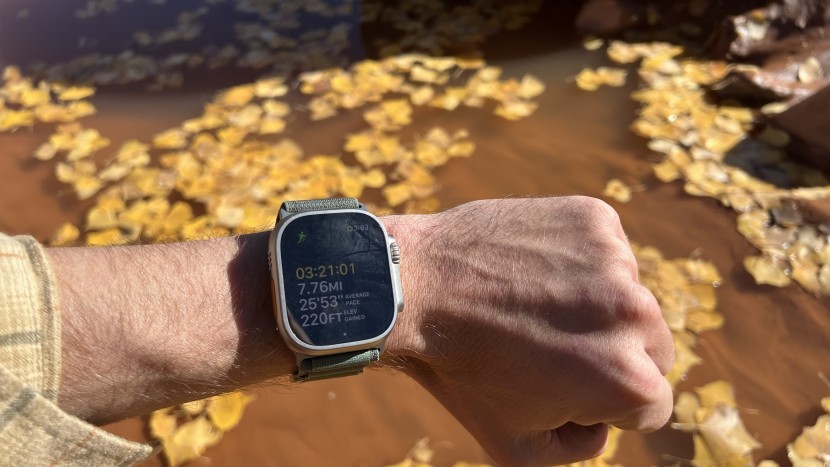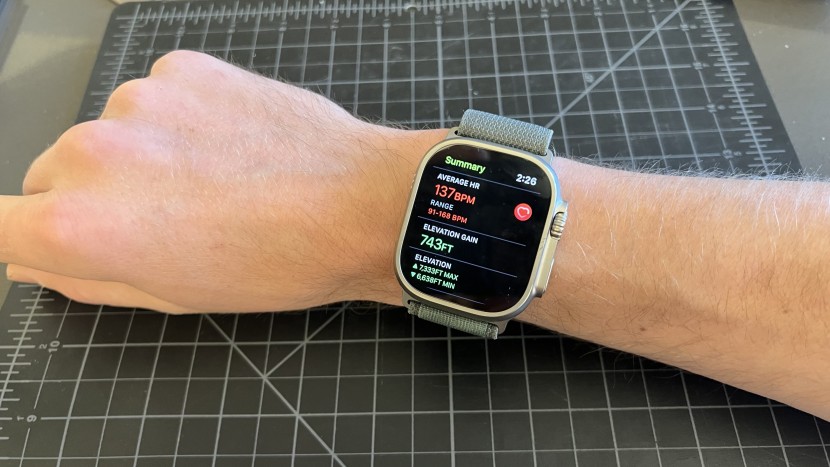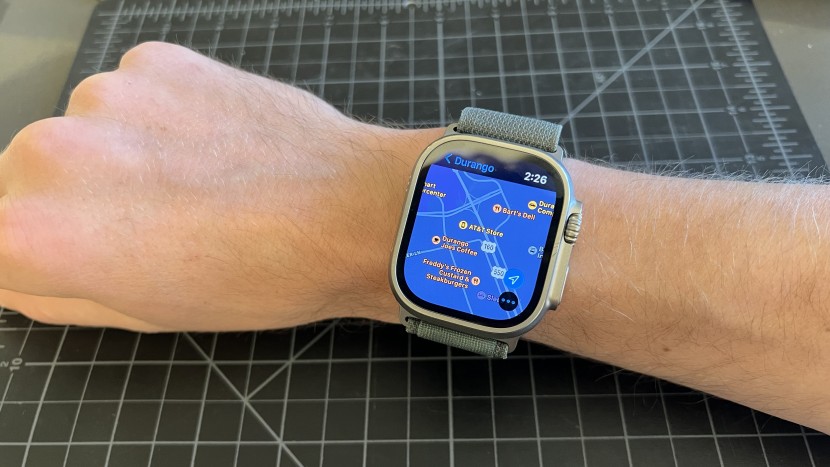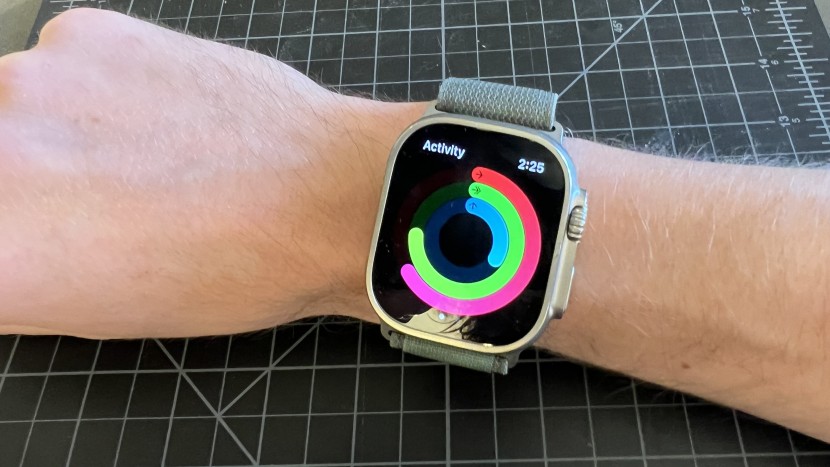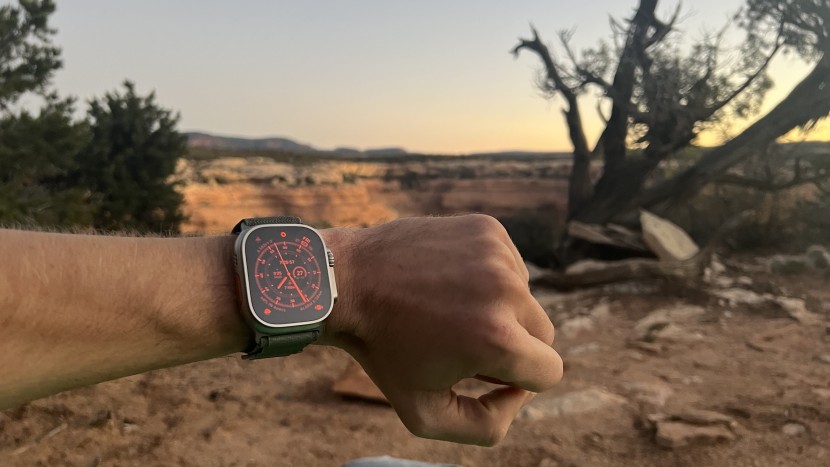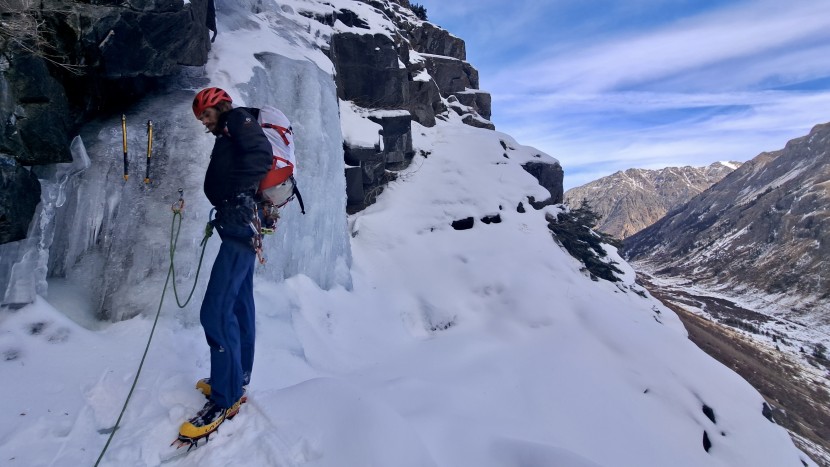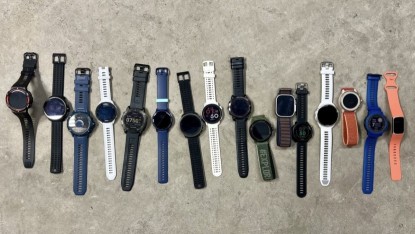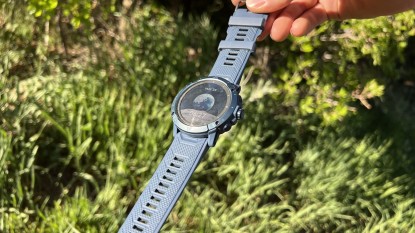Apple Watch Ultra Review
Our Verdict
Our Analysis and Test Results
Once announced, we knew we wanted to compare the Apple Watch Ultra to our current lineup of GPS watches. Generally, GPS watch makers convince you to purchase their device for either its features or battery performance. We hoped Apple's UI and ecosystem could combine the performance of the Coros and Garmin models while providing the best user experience. Unfortunately, right off the bat, a measly 18 hours in full GPS mode is a stat that will leave some ultra athletes looking elsewhere.
That said, this IS an Apple Watch, and, as such, you receive arguably the best user experience from both the watch and IOS app. No other watch comes close regarding the number of features and bells/whistles. Your usage and battery needs will determine if this is the right model for you. We think you should determine two things before deciding to purchase this model (further in-depth analysis follows this intro):- Location and setting. If you will always be accompanied by a cell phone with service, that is a win for the Apple Watch Ultra. If you exercise without your phone and often find yourself outside of cell service, you have better options.
- Battery needs. If you aren't an ultra athlete and can charge your device nightly, the Apple Watch Ultra will work for you. If you often are away from power and/or plan on doing long events, we'd suggest a model with more battery life. Unfortunately, low power mode detracts from the benefits of the device, leaving it feeling more of a liability than an enhancement to the outdoor experience.
Note that we did not test the Apple Watch Ultra on a cellular plan but tested the same features through handoff on a paired IOS device.
Features
A full list of features can be found by going to the official product page. A GPS watch for us is essential to our lifestyle, so we're going to focus on aspects of the watch that are more comparable to other GPS watches. Keep in mind third party apps could be available that differ from native watchOS apps.
By using the Apple Watch Ultra, you have the ability to access many of the main features found on your iPhone. The benefit of this model, when compared to the competition, is this seamless integration with your mobile device. The phone and messages functions are the most useful, and these work as any Apple Watch does. In regards to athletic features specific to a GPS watch, we think the most important are:- Data screens and activity tracking
- ABC functionality (Altimeter, Barometer, and Compass)
- Mapping/navigation
- Activity and health tracking
Watch Timing and Data Screens:
To put it bluntly, we are not huge fans of the data screens found on the Ultra. The metrics often blend together on the screen and are not divided into sections like those found on the Garmin and Coros products. We prefer the divided data because it's clear and precise when looking at the watch while running. Due to the always-on-screen display of the Ultra, some timing fields will not populate until your wrist is raised. This change is noticeable to your eye and was a constant annoyance for us. Also annoying is that the timing does not change to hh:mm:ss until you reach over 80-90 minutes. Maybe that's not a big deal to some, but we would much prefer to see 1:13:00 instead of 73:00:00. In addition, you cannot prioritize the data fields; each field is the same font and weight, with only the timing field having a different color. We like having a large main timing field with additional smaller fields that are glanced at less frequently. We think the fields should adjust given the amount of content on a data page. Pages should automatically resize given the available room, but this is not the case — a metric will be the same size regardless of the number of neighboring metrics.
Data metrics were also a bit of a letdown, with one huge red flag for our usage: while there is an altimeter function, there's no elevation descent field. Why this isn't included is beyond us and is a huge deal breaker. Often total elevation is more useful than mileage, and we frequently find ourselves remembering the amount of climbing or descent and not the mileage distance. So if you know you have a 300-foot descent ahead of you, there is no way to track this metric. Anytime we can avoid pulling out our phone to gather less crucial information is a plus. We think, given these negatives, this model would perform better in a more controlled environment, such as city usage or a track.
ABC Functionality:
Surprisingly, the Altimeter, Barometer, and Compass functions are among the best we've tested. They are enhanced even more if you use the standard watch face that ships with Ultra. A simple tap of the bezel can bring up the compass right from the watch screen. This is elegant and sleek and always appears functional and ready to go. We never had to recalibrate or adjust via GPS. The standalone compass app is easy to use and designed well. Without a doubt, this is the best compass design on a watch we've tested. There are no dedicated barometer functions, but third-party apps can be downloaded to add this data.
Mapping/Navigation:When paired with a phone with service or LTE cellular, this watch can display full world mapping, which mimics the maps found on your cell phone. Without service, there is the ability to turn on backtrack which claims to seamlessly turn on when losing cell service. We started a 2-day backpacking trip, and not once during this trip did we have cell coverage. After starting our workout, we found out that backtrack was never enabled; maybe this was due to low power mode. Regardless, this is a liability, in our opinion. Every other major “ultra” tier watch starts backtracking immediately with no questions asked, and you can always access the map to view this GPX track. For this model to not do the same is frustrating. On top of that, there is no way to export this data to third-party applications.
Fitness/Health Tracking:
Out of all the watches we've tested, the Apple Health and Fitness platforms are leaps above the competition. It's much easier to gain insights from these metrics than from the competitor's platforms. The data is beautifully displayed, and the apps are much easier to use, especially when compared to the Garmin Connect platform. There are a lot of added notes and helpful tips when viewing this data which helps those with less understanding learn more about their health metrics. Users that are familiar with this type of data will find the apps both easy to use and adequate. If you have been unhappy with your current platform, we think this one is the best.
Additional Features We Appreciate:
In no particular order: flashlight, great watch faces, the siren is great for stubborn cows on trail, the red watch face is excellent for nighttime, easily accessible alarms, the remote camera shutter is top-notch, Apple Pay, fantastic music integration, customization via mobile app, podcast/audiobook downloads.
To wrap up this longwinded features analysis… There is no doubt that this device has the most features out of any of the models we tested, but we think this is more designed for city usage or areas with service. We can't recommend this current feature set for an expedition or multi-day usage.
Battery Life
We tested the Ultra on a 3-day backpacking trip and recorded 9 hours of GPS data on low-power mode. The device remained on low power mode for a total of 48 hours. The watch is extremely useful in low-power mode, and we could still use features like the remote camera controls. We think this is about the maximum you could expect since we used the watch minimally outside of telling the time and the GPS tracking.
Apple claims a total of 15 hours of GPS time on low-power mode, which is getting closer to the threshold of some of our long efforts. 10-14 hour days are common enough in our testing that we prefer having a bit more of a buffer. That said, temperatures got down to lows in the 20s while we tested this watch, and we experienced no large drops in performance or battery. We would recommend this battery performance to users that need two days or fewer of runtime.
Ease of Use
The watchOS UI is easy to use and makes sense once you dive into the settings and menu systems. Luckily the watch iPhone app allows for easy customization of all of the settings found on the Apple Watch Ultra. There are also countless support articles that can assist with the various functions of the watch. The large orange action button can be switched between different functions, and our lead tester preferred this to be set to a flashlight function that would illuminate the large bright display — perfect for a dark bedroom. The scrolling bezel is used to start Siri and navigate through data screens. Finally, the back button can switch between previously used apps. A long press of this button will allow you to access the various emergency services.
One issue we had with this back button is that — by default — a long press and hold will automatically call 911. During our testing, we were awakened by a 911 dispatcher talking through the watch speaker. We'd suggest disabling the long press feature and requiring a mandatory swipe before dialing 911, especially if you plan on wearing this watch to bed.
While the number of features on the Ultra can initially feel overwhelming, we think this model is extremely easy to use, and we'd recommend it to anyone. As far as setup and mobile customization, this is among the very best and scores highly against the competition. Due to a focus on touch gestures, those that use this in wet conditions may find less usability than more dedicated button models. However, Apple's touch screen is a joy to use, and it's without a doubt the best touch model we've tested.
Accuracy
We wanted to test this watch in some challenging GPS conditions, and nothing tests GPS better than deep canyons. During our primary backpacking trip test, we went into some deep canyons and tested it head to head against our leading accuracy model, the Coros Vertix 2, which also has a dual frequency mode. Throughout our testing, we found that the mileage on the Ultra would be slightly over-calculated while the elevation gain would be under-calculated. Heart rate metrics, on average, were also slightly lower than our comparative model, but that could be due to the less precise fit of the 'alpine loop' wristband we were using. For the most accurate heart rate metrics, we would recommend the trail loop wristband.
Using low-power mode on extended trips and activities, you may be sacrificing GPS accuracy. During daily testing, the Ultra closely mimicked other top contenders in terms of mileage, but the overall elevation gain was still slightly underreported. In all, this model contends with all of the other top models regarding accuracy. We do think there could be improvements in more rugged terrain, however, it's hard to argue against this model. We think the most important factor could be the watch strap you use and the fit when trying to get the best-performing heart rate data.
Design
We are fans of the rounded rectangular design; it's unique and creates a large comfortable touch screen. This is subjective, so others could feel differently. When we buy a GPS watch at this price point, we plan on wearing it all day. If you are purely buying a watch for activity usage, then this category might matter less to you. The outer titanium band is durable, and we experienced no scratching or damage to the device, even using it for rock climbing and ice climbing. The watch is also surprisingly light, given its size. Initially, we thought the squared design would fit weirdly, but even on smaller wrists, we found it comfortable. The UI can be rotated internally allowing for both right and left-handed usage and the bezel can be changed to fit your comfort. We like the magnetic charging design, although those that are looking to use this model while on the move will have difficulty keeping this charger design attached. That said, this is the most premium feeling watch we've tested, and it's exceptionally well built.
Three different watch-specific straps are available, and we tested the alpine model. At first, this took some getting used to, but the watch strap tends to break in over time, allowing for easier unlatching and latching. We found the adjustment range to be too narrow, and we prefer a nylon band, which has a bit more give. Luckily these straps are interchangeable with any Apple Watch. If you are purely going for the style we think the alpine loop strap looks great and we found it perfect for hiking and daily use. If you are going to use this for more athletic high-movement activities like biking and running, we'd suggest the more adjustable stretchy trail band. While these straps are expensive, we think they are very well-built and should last as long as the watch.
Should You Buy the Apple Watch Ultra?
You should buy this watch if you've been waiting for a more rugged Apple Watch and you're not an ultra-athlete. The Ultra will work great for those that want a high level of phone integration — it is simply the best smartwatch on the market. If you are an ultra-athlete or someone that uses your watch for expedition use or finds yourself outside of service for extended periods of time, we'd recommend a high-level Garmin or Coros model. If you can live with two-day battery life, the Ultra is a great option. This watch is beautiful, functions great, and is extremely easy to use. We also find ourselves looking at our phones less frequently when using this model, which is always a plus in our opinion, even more so if you plan on using the LTE functionality.
What Other GPS Watches Should You Consider?
We'd recommend the Garmin Forerunner 955 or the Garmin Fenix 7 for their comparable features. While you don't receive the same Apple-quality UI and phone integration, these models are still very capable of daily use. They have increased navigation functions and much longer battery times for extended activities and multi-day trips without power.




